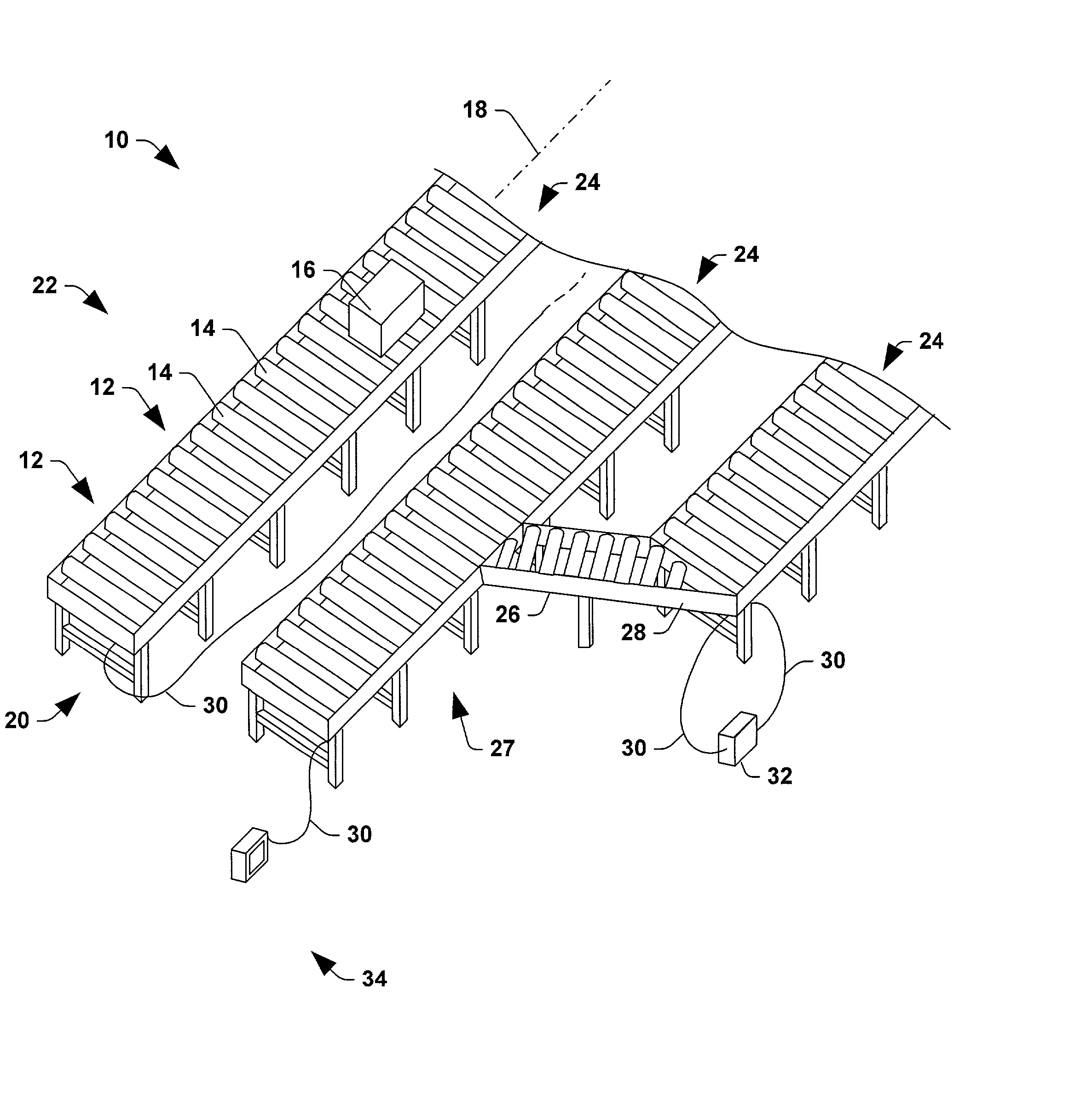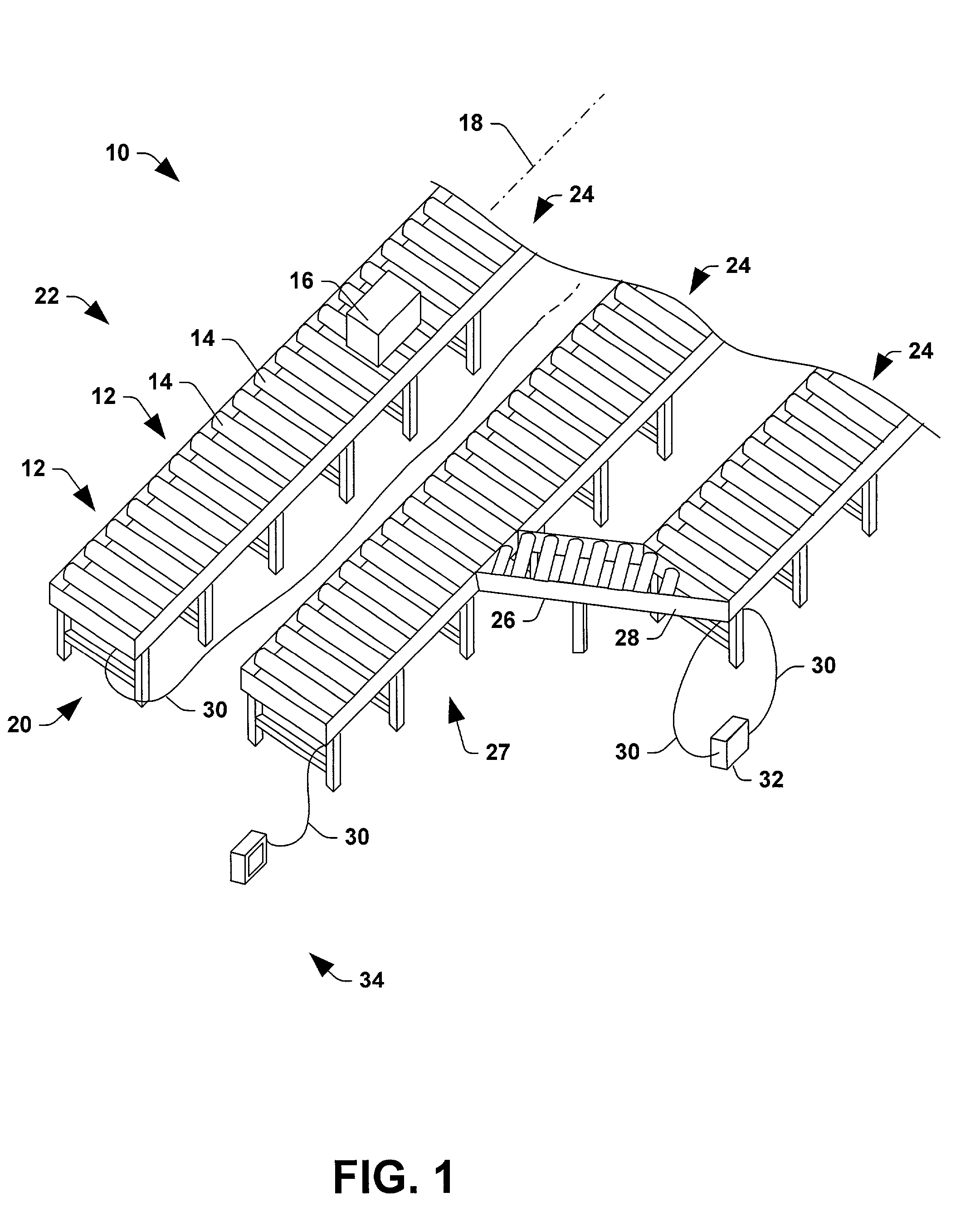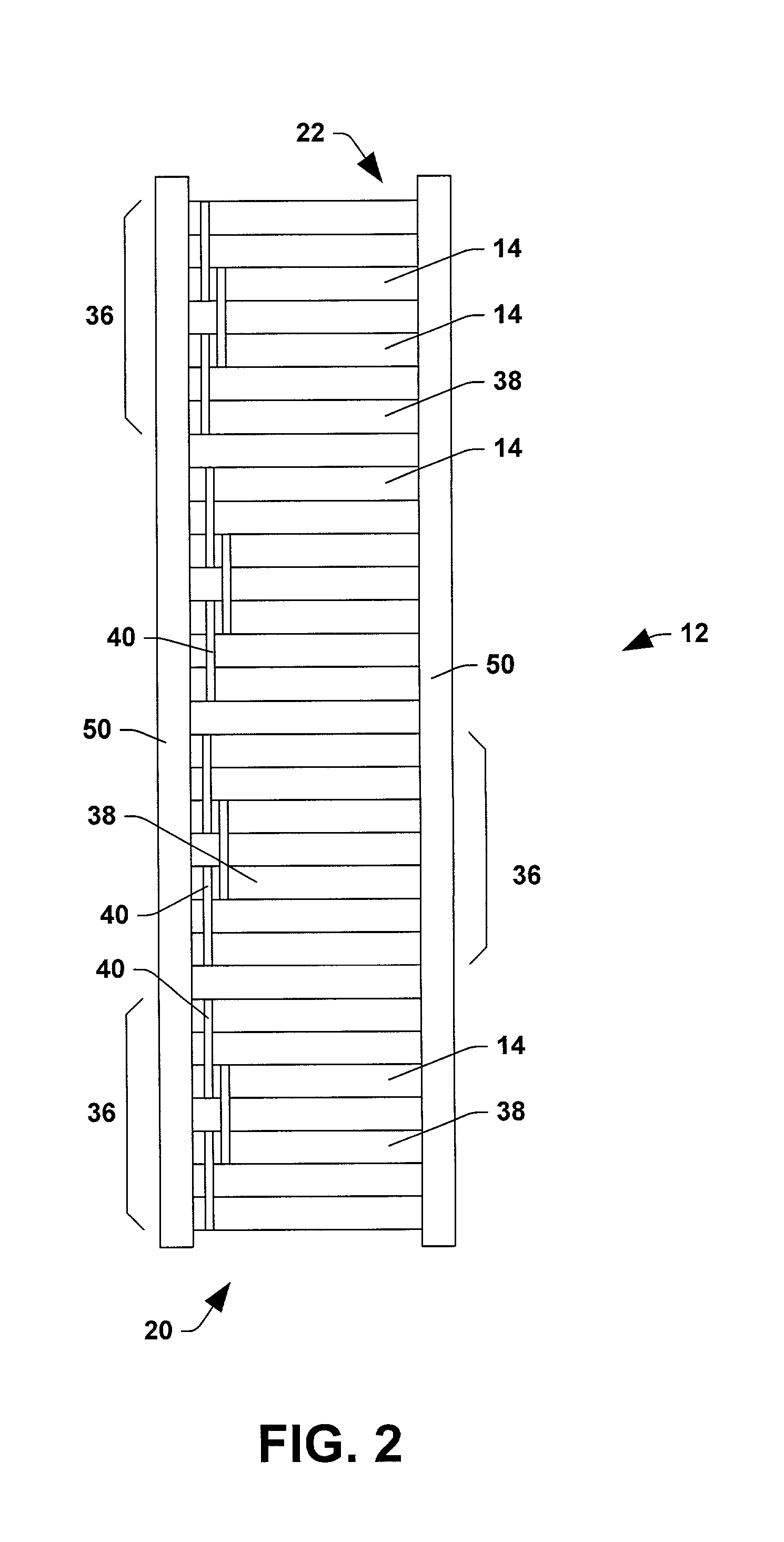Driver board control system for modular conveyor with address-based network for inter-conveyer communication
a control system and modular technology, applied in the field of industrial controllers, can solve the problems of difficult detection and reporting of conveyor system problems, central control, and relatively difficult reconfiguration of conveyor systems, and achieve the effect of facilitating the setup of new conveyor systems and reducing the manual reprogramming of individual control systems
- Summary
- Abstract
- Description
- Claims
- Application Information
AI Technical Summary
Benefits of technology
Problems solved by technology
Method used
Image
Examples
Embodiment Construction
[0062] The present invention is now described with reference to the drawings, wherein like reference numerals are used to refer to like elements throughout. In order to provide context for the various features and aspects of the present invention, an exemplary conveyor system is illustrated and described. Referring now to FIG. 1, an exemplary conveyor system 10 may be assembled from a plurality of conveyor sticks 12, each providing upwardly exposed rollers 14 for moving one or more objects 16 along a conveyor axis 18. The rollers 14 of the conveyor sticks 12 may be reversible, thus allowing the object 16 to be moved in either direction along axis 18 in a controlled fashion. Nevertheless, an arbitrary "upstream" end 20 and "downstream" end 22 may be defined for each conveyor section representing one direction of flow along axis 18 for the processes of accumulation and slug release.
[0063] The conveyor sticks 12 may be arranged in one or more parallel banks 24 and may include alternati...
PUM
 Login to View More
Login to View More Abstract
Description
Claims
Application Information
 Login to View More
Login to View More - R&D
- Intellectual Property
- Life Sciences
- Materials
- Tech Scout
- Unparalleled Data Quality
- Higher Quality Content
- 60% Fewer Hallucinations
Browse by: Latest US Patents, China's latest patents, Technical Efficacy Thesaurus, Application Domain, Technology Topic, Popular Technical Reports.
© 2025 PatSnap. All rights reserved.Legal|Privacy policy|Modern Slavery Act Transparency Statement|Sitemap|About US| Contact US: help@patsnap.com



